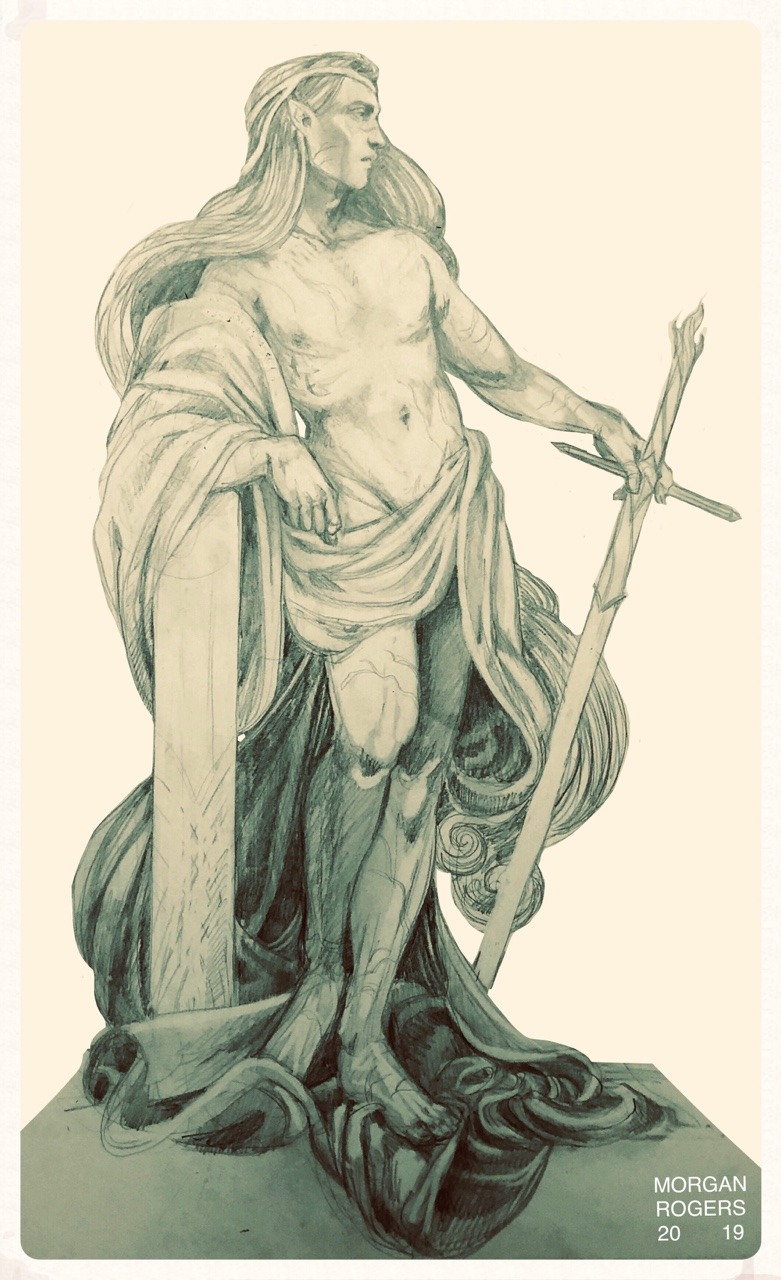Eresdolhn: the Undying
Greatest of the Elves
If there are any seeking information against the Good Folk whom we call the Eresdolhn, then know that you will not find such information, here. The Fair Haired Elves have only ever been close allies of Juraedon and regarding them we have only good words.
They were and still are the most numerous and powerful division of the Itie'lman, or the High Elves.
The Eresdolhn were the greatest defenders of the West during the times of the Wars of Hate. Against their shields the tides of Gendûet Seat of Judgement broke; and though in the end all were felled, it may be attested that, for a time, the clear noise of the pearl horns of the Fair-elves were explosive noises of hope and declarations of victory to come. The Eresdolhn are a wild and hardy folk, filled with hard-earned wisdom and given to furious bursts of passion. In history they were a cleaving thunderbolt, striking down a pitted, miserable path. Today they are fading, though they shall not be forgotten.
The Eresdolhn ruled vast kingdoms across Lower Huraedon and had many colonies in the Western Mountains. Today, they are mostly relegated to small, sovereign states that cling to the coastal edges of Eastern Lower Huraedon. These states, written in their Common form, are: Daedolium, Dedolin, Luruthiem, Toliath, and Hilumm. These states are variously ruled by either councils or kings. They are delightful realms, where farmers, artisans, merchants, scholars, and rulers live in equal prosperity, with their material and social differences springing from ideals in ritual and from the spiritual value of the station. So, for example, kings are held in high regard as the station of kinghood is, in itself, respectable, and the king and his heirs will live in a grand manor fit for the kingly role.
But each station has a separate purpose, and the king's purpose is vital to the Eresdolhn states. The aforementioned manor is central to the Eresdolhn economy. From the manor is distributed much of that realm's resources in an equitable manner and form — but capital and private property are still existent and highly respected. So no material good is unavailable from one class to the other, and differences, such as the palatial home of the king, are accorded to the station rather than the person, and the material differences are usually only afforded to those in high government positions rather than those positions based on class. Mighty persons are still held in high regard and are still accorded great honors, though these honors are of social and spiritual rather than material worth.
The means of production in these kingdoms are primarily controlled by small family units. It is a principle to the Eresdolhn to not organize in large congregations to do work that could be done with a small congregation. Most preferable is the family unit as the center of production, and so most Eresdolhn work on this principle. While their production is slower and less voluminous as that of our own Northern Empire, the author of this article must admit that the Eresdolhn derive more joy from their work, and their craftsmanship is of premier quality.
The Eresdolhn are black or golden-haired. Their hair is usually wavy or thick and curly. Their complexion is usually pale brown, but ranges from an alabaster white to the more usual olive complexion. They have wide, bright eyes that are either blue, grey, or brown. Their noses are narrow and partly curved. Their statures are high, and their heads and faces are long. Usually muscular, the Eresdolhn are also of the slender build that is considered youthful and beautiful in Lower Huraedon, with narrow waists, broad shoulders, and long necks.
Where the shade was thickest there was a white statue. It was a naked man, but where it was in that dark shade it sort of loomed out at me like a ghost. One hand lay easy on a sword, which stuck in the ground like a staff, and he leaned on a broken pillar.


Comments